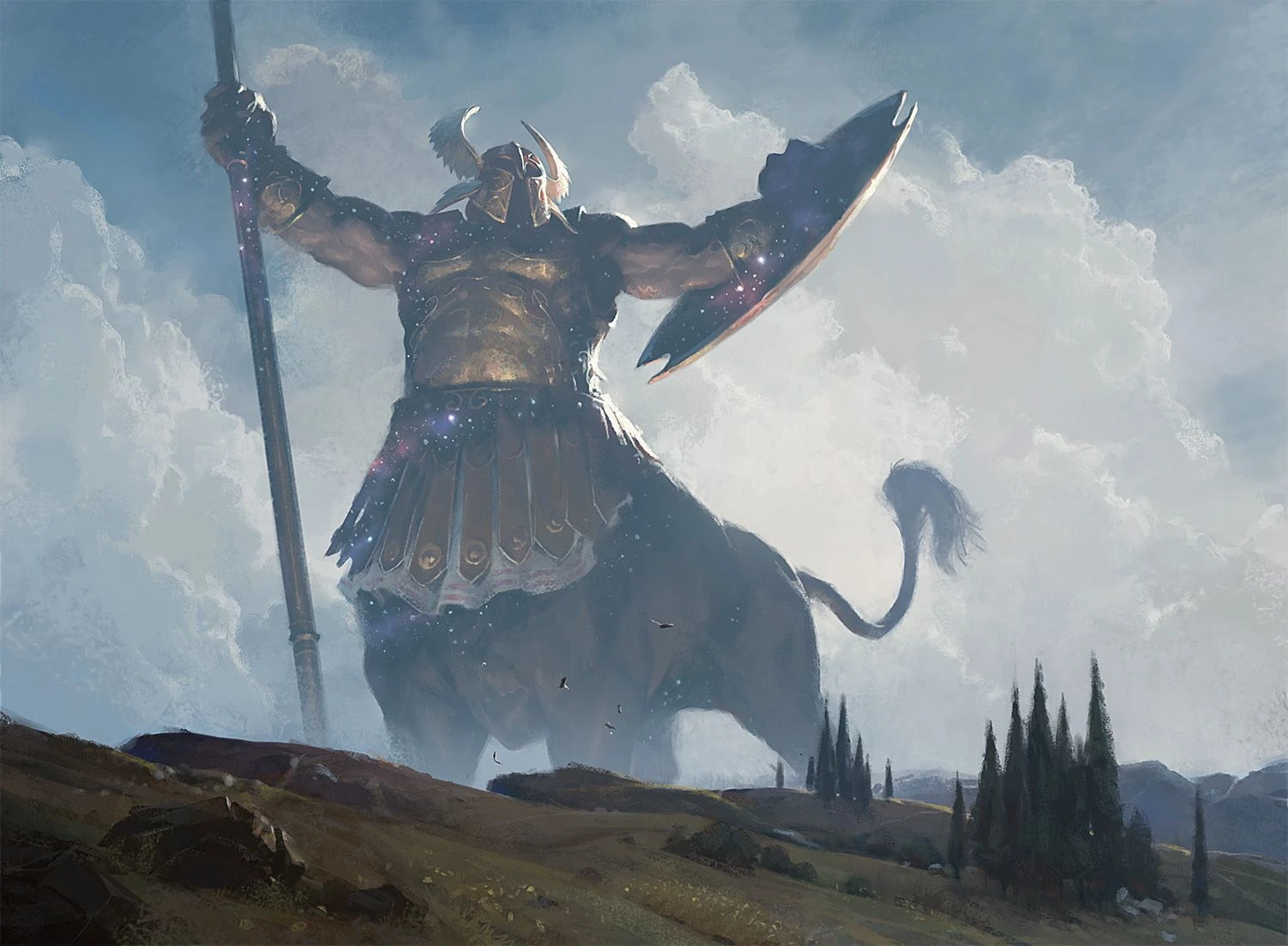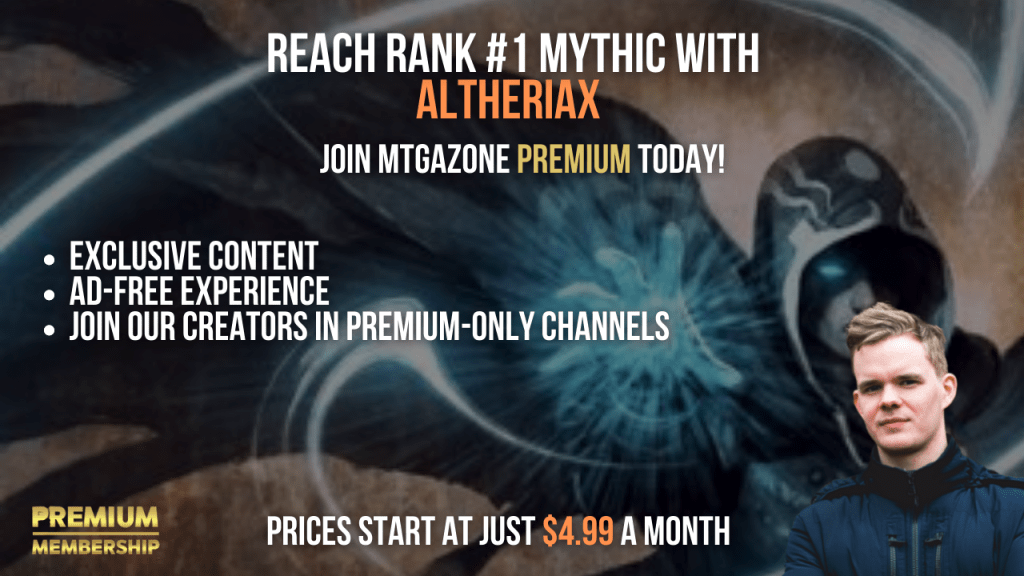Table of Contents
Introduction
So you’ve decided to try out Wizards of the Coast’s brand-new digital collectible card game, Magic Spellslingers (check out my full review), but you’re unsure where to really start in terms of play. The game presents you with a load of options after completing the five tutorial challenges, and not a lot of direction. There’s no real way to know in-client which planeswalker is best to unlock first, and you’re likely considering just picking a character you like. This guide will give you some general direction in terms of which characters are best early on for your particular play style, as well as giving you a general idea of what you should be doing first to start accruing resources and building out your collection.
What Planeswalker Should I Choose?
The number one thing you should have in mind after you complete the tutorials is what sort of playstyle you prefer. Decks genuinely fall into four categories: Aggro, Midrange, Control, and Combo, though the latter functions less like it does in Magic than you’d think, but more on that in a bit.
Aggro

Your initial planeswalker, Chandra, lends herself very well to aggro builds, so keep that in mind. If you’re looking for another planeswalker to hit the gas, so-to-speak, Angrath is one of the better options for a beginner. Angrath’s ability, Hammer Home, boosts his creatures if the opponent has been dealt damage this turn, so you’ll likely be able to leverage similar cards to Chandra, albeit in different ways. Shock, for example, is typically removal in other decks, but Angrath may be looking to use it as a 1 mana means to trigger his pump. He encourages you to play your creatures post-combat, something that was often rewarded in traditional Magic, as well. Angrath’s best tool is the card Searing Chains, which is essentially a Lava Spike divided up across three turns.
Midrange

If you’re interested in a more Midrange plan, the generally agreed upon best options early on are Kiora and Liliana. Both are planeswalkers looking to play to the late game in different ways. Kiora gets to leverage powerful ramp cards, including Kiora’s Tideshaper, to get ahead of the opponent, while Liliana can use Zombify to keep bringing her Zombies back again and again, all while gaining life as she uses the graveyard.
Kiora’s ability, Beckon Behemoths, allows her to start the game with a 0/1 Fish, perfect for stalling, and then rewards you with a super strong 10 mana Leviathan when you hit 10, 15, and 20 mana. Liliana, meanwhile, has Grave Ambition, which results in the creatures she returns from the graveyard coming back stronger, as well as gaining her a life for each creature she brings back. Each of these plans is viable, and while I personally prefer Kiora in terms of gameplay, neither is a bad option for your second planeswalker.
Control

If you’re looking to Control the battlefield, your primary options are Jace and Teferi. Both are playing a similar sort of game, but with a focus on different things. Jace’s focus is on card draw, while Teferi is Traps matter (Traps being Magic Spellslinger’s equivalent of Instants). I think neither of these is particularly new player friendly, truthfully, but Jace’s primary ability, Multiverse Mind, is likely to be the most enticing early on.
Multiverse Mind is a 20 mana activated ability, but it gets perpetually cost reduced for each card you draw throughout the game, including the cards you draw in your opening hand. Once activated, Multiverse Mind draws you a card, and then has all your remaining cards cost only 1 mana moving forward. It’s incredibly powerful, and burring your opponent under mounds of card advantage can be pretty fun.
Combo

Combo, like Control, is a little more difficult to get in to as a newer player, primarily because the starter decks the two main Combo planeswalkers come with are so weak. Ashiok and Ral are two characters with strong abilities, but their initial decks are largely not optimized to take advantage of them super well. Ashiok’s ability, Weave Nightmares, shoves “Nightmares” onto the cards in your opponent’s deck whenever you add a card to your hand or play a card that didn’t start in your deck. The Nightmares drain your opponent’s life whenever they draw a card with one attached to it.
Ral’s Storm Conduit gives a 2 mana discount to every third spell he casts, while also pinging the opponent on the third spell, too. Both characters are great once you’ve spent your time grinding and obtained enough cards, but to start, they’re not exactly ideal.
To simplify the above, my overall suggestion is picking either Angrath, Kiora, or Liliana as your first planeswalker after Chandra, with Kiora, in my opinion, being the best option of the trio. She scales well higher up the ladder, has a lot of flexibility in terms of what cards are decent in her style of deck, and also has a rock solid starter deck for beginning your journey. That said, you really can’t go too wrong with any planeswalker, so long as you’re willing to dedicate time to build up their respective decks.
How Do I Get New Cards?
Next, let’s talk about what sorts of games you should be playing to build up a healthy collection. You’re likely looking to start upgrading your decks, and the game hasn’t told you what you should be doing. You’re basically going to have three things you have to do, each rewarding you with more and more resources. These are Challenges, Events, and the League.
Challenges

Challenges will reward you with Gold, Boosters, and sometimes other rewards. The difficulty of these varies, but are typically fairly simple affairs, like “Play 4 Soldiers”, “Complete a game with a blue Planeswalker”, and so on. You get new Challenges every couple of hours, so you should always have stuff to do to obtain rewards whenever you turn on the game. That all being said, it’s worth noting that most rewards are just Gold, which aren’t directly contributing to filling out the collection, apart from buying cards and packs from your Daily Deals.
Events

Events are going to be your main means of accessing cards. Events offer an initial free entry, and then cost 500 gold for each subsequent entry. Currently, the “Opening Ceremonies” event, which runs until next Sunday the 21st of August, rewards you with tons of Mox Shards (used for crafting cards) each time you complete it. It’s the best way to grind out a collection, and you can do it over and over for 500 gold a pop. It’s also worth noting that roughly every three times you win out Opening Ceremonies specifically, you earn enough progress to unlock another planeswalker. It’s crazy how good the value proposition is here!
League
Last, we have the League ladder. These reward you some small rewards as you rank up, and you get a much larger prize once the season ends. Tied to this, you’ll also get prize chests each week, which unlock for every five wins you accrue in League. You definitely want to sink time into the League every single week as a result, and working your way up the ladder is something very rewarding, albeit not immediately.
Daily Deals

One last thing to discuss in this regard, which I mentioned briefly above, is the Daily Deals. These offer you a great way to use your Gold, as typically Booster Packs can only be purchased via Gems, as well as access to random discounted singles. It sounds odd to say like this, but you’d be surprised how impactful the contents of the shop can be, especially given how rough the game’s Economy can be to start. I always end up purchasing the four cheapest items on the store for this very reason.
Conclusion

Magic Spellslingers is looking to be picking up steam on social media. More and more I’m seeing people talking about how great this new game is. As I stated in my review a few days ago, the economy is going to be the biggest hindrance to you, as a player, getting the most out of this game. Hopefully the beginner tips I provided here on selecting your first Planeswalker(s) and on how to grind Events will help you bypass some of that difficulty and get you on your way to becoming the Champion of Valor’s Reach!

Premium
Enjoy our content? Wish to support our work? Join our Premium community, get access to exclusive content, remove all advertisements, and more!
- No ads: Browse the entire website ad-free, both display and video.
- Exclusive Content: Instant access to all exclusive articles only for Premium members, at your fingertips.
- Support: All your contributions get directly reinvested into the website to increase your viewing experience!
- Discord: Join our Discord server, claim your Premium role and gain access to exclusive channels where you can learn in real time!
- Special offer: For a limited time, use coupon code L95WR9JOWV to get 50% off the Annual plan!






























